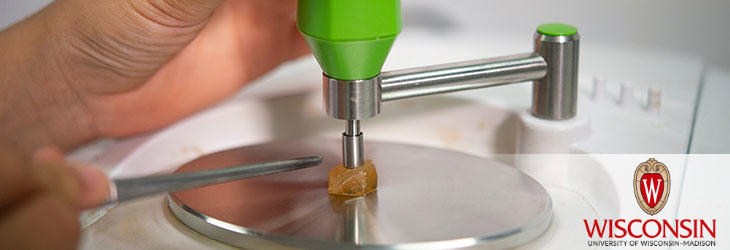Research Tools

Platform for High-Throughput Analysis of Microbial Interactions
WARF: P190033US02
Inventors: Ophelia Venturelli, Philip Romero, Ryan Hsu, Jin Wen Tan
The Wisconsin Alumni Research Foundation (WARF) is seeking commercial partners interested in developing a research tool for large-scale mapping of interactions in microbiomes. The new method employs gene sequencing in a microfluidic system to increase throughput by several orders of magnitude (1,000-10,000 times).
Overview
In nature, most microbes live in synergistic communities (microbiomes) as a way to thrive in various environments. For example, more than 100 trillion bacteria are estimated to live in the human gut and more than 600 species are known to inhabit the oral cavity. These microbes are believed to impact human health, including digestion and immunity.
Despite their significance, understanding of these microbial communities remains limited, largely owing to their complexity and the difficulty of laboratory cultivation. In fact, the majority of microbial species (estimated to be in the millions) have not been cultured in the lab, severely limiting the extent to which they can be characterized and studied.
Previous research has focused largely on analyzing pure cultures and does not address the key question of microbial interactions. The ability to investigate interactions among different members of microbial communities could have profound implications, from improving health to food safety. State-of-the-art methods to infer such interactions simply cannot scale to the size and complexity of natural microbiomes.
Despite their significance, understanding of these microbial communities remains limited, largely owing to their complexity and the difficulty of laboratory cultivation. In fact, the majority of microbial species (estimated to be in the millions) have not been cultured in the lab, severely limiting the extent to which they can be characterized and studied.
Previous research has focused largely on analyzing pure cultures and does not address the key question of microbial interactions. The ability to investigate interactions among different members of microbial communities could have profound implications, from improving health to food safety. State-of-the-art methods to infer such interactions simply cannot scale to the size and complexity of natural microbiomes.
The Invention
UW–Madison researchers have developed a research tool for large-scale mapping of interactions in microbiomes. Their method employs gene sequencing in a microfluidic system to increase throughput by several orders of magnitude (1,000-10,000 times).
Specifically, the researchers mixed groups of several species of bacteria in culture. They encapsulated cells into millions of picoliter droplets dispersed in an oil phase. The droplets were incubated to allow the microbes to interact, assemble into a community and perform functional activities. After incubation, the composition of the community within the droplet was analyzed using fluorescence microscopy or next-generation DNA sequencing.
The presence or absence of microbes in a drop can be indicative of different species preferentially interacting with other species in the bulk culture or droplet, and can be used to reconstruct the microbiome’s ecological network.
Specifically, the researchers mixed groups of several species of bacteria in culture. They encapsulated cells into millions of picoliter droplets dispersed in an oil phase. The droplets were incubated to allow the microbes to interact, assemble into a community and perform functional activities. After incubation, the composition of the community within the droplet was analyzed using fluorescence microscopy or next-generation DNA sequencing.
The presence or absence of microbes in a drop can be indicative of different species preferentially interacting with other species in the bulk culture or droplet, and can be used to reconstruct the microbiome’s ecological network.
Applications
- Analysis of microbial community dynamics
- Device would be a single purchase, but the reagents and kits for performing a variety of experiments would be sold as consumables.
- Potential human health implications, e.g., targeted manipulation of gut microbiota
Key Benefits
- Substantially increases throughput
- Capacity to investigate microbiome communities rivaling the complexity of natural systems
Additional Information
For More Information About the Inventors
Publications
Tech Fields
For current licensing status, please contact Jennifer Gottwald at [javascript protected email address] or 608-960-9854